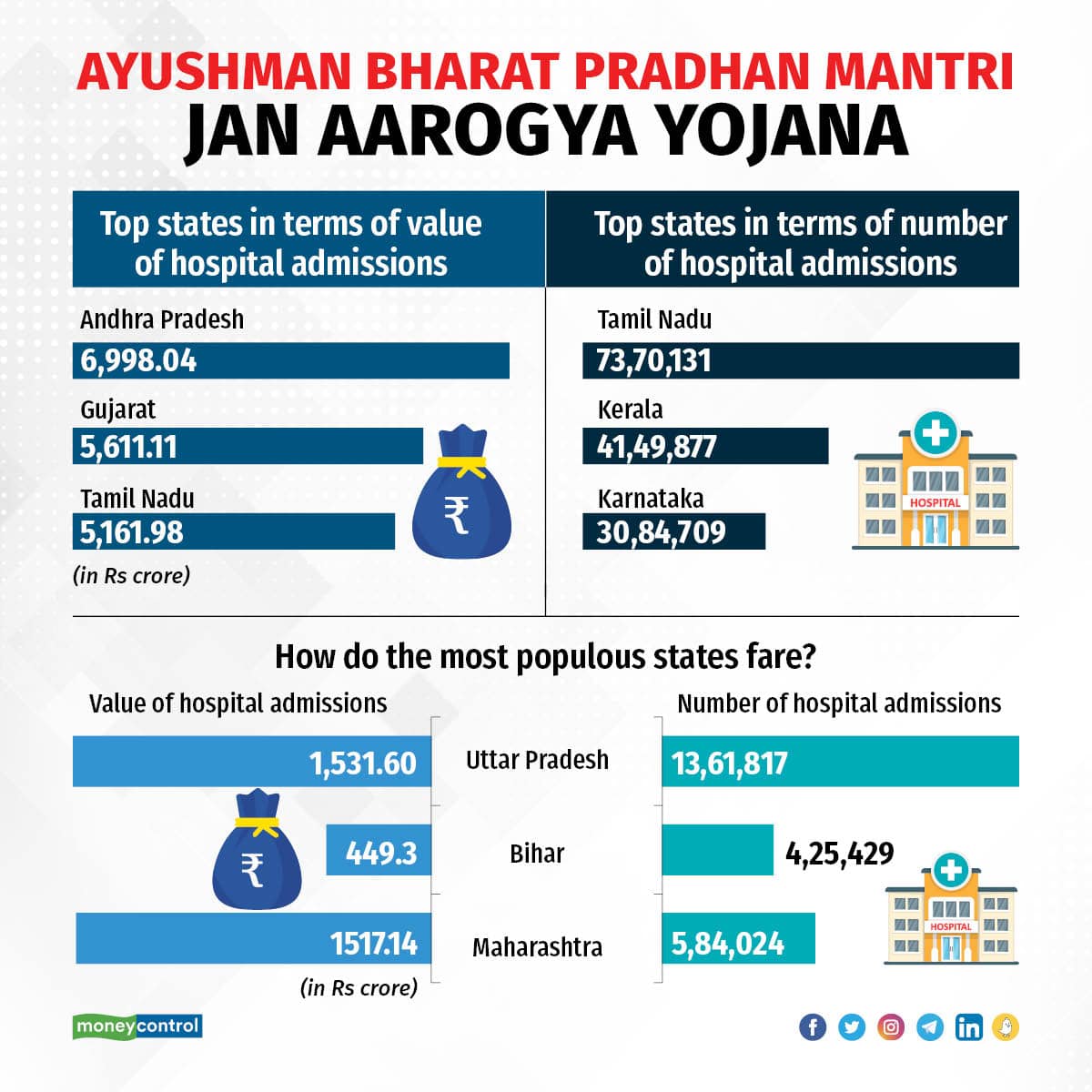



The utilisation of the Union government’s flagship health insurance scheme Ayushman Bharat—Pradhan Mantri Jan Arogya Yojana (PMJAY) has remained way lower in India’s most populous states Uttar Pradesh, Bihar and Maharashtra compared to most other big states in the country.
Under PMJAY, which was launched by the Modi government in 2018, nearly 50 crore of the poorest Indians are entitled to free hospitalisation coverage of up to Rs 5 lakh for secondary and tertiary care.
The data presented by the National Health Authority, the agency that implements PMJAY, in response to a query in Parliament on July 20 showed that the value of hospital admission authorisation under the scheme is the highest in Andhra Pradesh, followed by Gujarat.
In contrast, Uttar Pradesh, Bihar and Maharashtra, three of the largest states in India by population, rank much lower.

The figures also show that by the number of total admissions under the scheme, Tamil Nadu is at the top, followed by Kerala and Karnataka. UP, Bihar and Maharashtra lag way behind on this count as well.
Overall, for about 3.6 crore admissions under the scheme, Rs 42,451 crore have been spent by the central and state governments so far, showed the NHA statistics.
Officials in the government agency conceded there has been a problem of low utilisation in some cases.
“Some states with historically poor health systems have been struggling to utilise the scheme but the situation now is fairly better than what it was in the beginning when PMJAY was launched,” said a senior NHA official, who asked not to be named.
Under the new version of Health Benefit Packages, which was launched in April this year, 1,949 procedures including secondary, tertiary and palliative care across 27 specialities are offered to beneficiaries.
Also read I Private hospitals seek financial aid from government to train more specialists
States with prior experience doing betterEconomist Pritam Datta, a fellow at the National Institute of Public Finance and Policy, said that UP and Bihar are two among seven greenfield states where there was no health insurance scheme earlier.
“So the absence of prior knowledge may be the reason behind low utilisation,” he said, adding that Tamil Nadu, Kerala and Andhra Pradesh have prior experience in rolling out state-sponsored health insurance schemes and uptake of PMJAY is also high in these states.
Public health researcher Oommen John, who is attached to the George Institute of Global Health in Delhi, too, underlined that consumption of services under PMJAY is a reflection of state capacity for service delivery.
“States that have systematically invested in health delivery systems and robust mechanisms for insurance based services fulfilment have seen maximum utilisation as per the data shared.”
John pointed out that Andhra Pradesh is one of the pioneers in insurance-based health assurance and the state scheme Arogyasri has matured over the years.
This scheme, he said, currently has significant capacity to offer a wide range of services and similarly systematic investment into Tamil Nadu’s medical services corporation is also reflecting the robust utilisation.
Also read I In Depth | Spadework begins for affordable medicines in India
Maharashtra shockerOne of the states that has surprised many due to poor utilisation of the scheme is Maharashtra. But Datta explained that it may be due to the high burden of COVID-19 since 2020 as the state has seen the maximum number of cases almost throughout the pandemic.
“It may be fear of infection and diversion of more hospital beds and other health infrastructure towards the ongoing COVID-19 pandemic, because of which utilisation of the central health scheme in the state may have suffered,” he pointed out.
Discover the latest Business News, Sensex, and Nifty updates. Obtain Personal Finance insights, tax queries, and expert opinions on Moneycontrol or download the Moneycontrol App to stay updated!
Find the best of Al News in one place, specially curated for you every weekend.
Stay on top of the latest tech trends and biggest startup news.